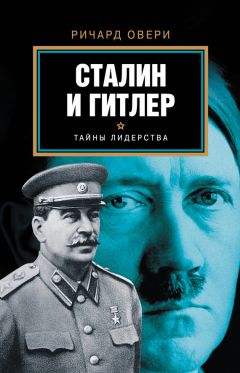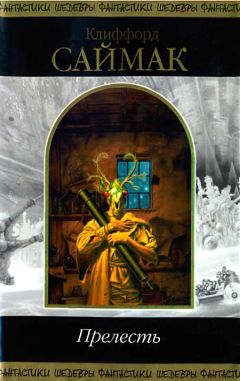105. Hartmann, ‘Massensterben oder Massenvernichtung?’, p. 157.
106. Hartmann, ‘Massensterben oder Massenvernichtung?’, p. 158; Herbert, Fremdarbeiter, pp. 148–9.
107. Hartmann, ‘Massensterben oder Massenvernichtung?’, p. 158.
108. Herbert, Fremdarbeiterp, p. 136.
109. S. Karner Im Archipel GUPVI: Kriegsgefangenschaft und Internierung in der Sowjetunion 1941–1956 (Vienna, 1995), pp. 90–94, 194; Russkii Arkhiv 13, Part 2, pp. 69, 76, 159–60.
110. Karner, Archipel GUPVI, pp. 94–104, 195; Russkii Arkhiv 13, Part 2, pp. 171–9, 265–74; R. J. Overy Russia’s War (London, 1998), pp. 297–8.
111. Heer, Tote Zonen, p. 101.
112. C. Streit ‘Partisans – Resistance – Prisoners of War’, in Wieczynski, Operation Barbarossa, p. 271.
113. H. Heer ‘Die Logik des Vernichtungskrieges: Wehrmacht und Partisanenkampf’, in Heer and Naumann, Vernichtungskrieg, pp. 112–13.
114. Hesse, Partisanenkrieg, pp. 178–80; L. Grenkevich The Soviet Partisan Movement 1941–1944 (London, 1999), pp. 77–9; Wehrmachtsverbrechen: Dokumente aus sowjetischen Archiven ed. L. Besymensky (Cologne, 1997), p. 116, OKW Befehl,
16 December, 1942; K.-M. Mallmann “‘Aufgeräumt und abgebrannt”: Sicherheitspolizei und “Bandenkampf” in der besetzten Sowjetunion’, in G. Paul and K.-M. Mallmann (eds) Die Gestapo im Zweiten Weltkrieg: Heimatfront und besetztes Europa (Darmstadt, 2000), pp. 506–7.
115. J. A. Armstrong (ed.) Soviet Partisans in World War II (Madison, Wise. 1964), pp. 98–103, 662; Grenkevich, Soviet Partisan Movement, pp. 92–3.
116. Geddes, Nichivö, pp. 87–95.
117. Mallmann, ‘Sicherheitspolizei und “Bandenkampf”’, p. 503.
118. T. Anderson ‘Incident at Baranivka: German Reprisals and the Soviet Partisan Movement in the Ukraine, October-December 1941’, Journal of Modern History, 71 (1999), pp. 611–13.
119. K. Lutzel Deutsche Soldaten – nationalsozialistischer Krieg? Kriegserlebnis und Kriegserfahrung (Paderborn, 1998), p. 184.
120. Mallmann, ‘Sicherheitspolizei und “Bandenkampf”’, pp. 513–14; see too B. Shepherd ‘The Continuum of Brutality: Wehrmacht
Security Divisions in Central Russia, 1942’, German History, 21 (2003), pp. 60–63.
121. R. Rhodes Masters of Death: the SS Einsatzgruppen and the Invention of the Holocaust (New York, 2002), pp. 219–20.
122. Public Record Offi ce, London, WO 311/45, letter from Judge-Advocate General Western Command Branch to Military Dept., Judge-Advocate General’s offi ce, 1 May 1945, p. 1.
123. See for example M. Mazower ‘Military Violence and National Socialist Values: The Wehrmacht in Greece 1941–1944’, Past & Present, 134 (1992), pp. 129–58; W. Manoschek ‘The Extermination of Jews in Serbia’, in U. Herbert (ed.) National Socialist Extermination Policies: Contemporary German Perspectives and Controversies (Oxford, 2000), pp. 163–85.
124. Gorinov, ‘Muscovites’ Moods’, p. 119.
125. Weiner, Making Sense of War, pp. 172–3.
126. Weiner, Making Sense of War, pp. 177–9.
127. S. Bialer (ed.) Stalin and his Generals: Soviet Military Memoirs of World War II (New York, 1969), pp. 140–41, 143–8.
128. Soviet fi gures in Harrison, The Soviet Union’, p. 285. The armed forces employed 7.1 million in 1941, 11.3 million in 1942, 11.9 million in 1943 and 12.2 million in 1944. German fi gures from H.-U. Thamer Verführung und Gewalt: Deutschland 1933–1945 (Berlin, 1986), p. 718. The numbers conscripted by 1942 were 9.4 million, 1943 11.2 million, 1944 12.4 million.
129. Krivosheev, Soviet Casualties, pp. 85–91.
130. Sokolov, The Cost of War’, pp. 175–6, 187.
131. Bessonov, Tank Rider, p. 44; W. S. Dunn Hitler’s Nemesis: the Red Army 1933–1945 (Westport, Conn., 1994), pp. 62–4; R. Thurston ‘Cauldrons of Loyalty and Betrayal: Soviet Soldiers’ Behaviour 1941 and 1945’, in Thurston and Bonwetsch, People’s War, pp. 239–40; J. Erickson ‘Red Army Battlefi eld Performance, 1941–45: the System and the Soldier’, in P. Addison and A. Calder (eds) Time to Kill: the Soldier’s Experience of War in the West, 1939–1945 (London, 1997), pp. 237–41, 247–8.
132. On the Soviet balance between men and military equipment see J. Sapir The Economics of War in the Soviet Union during World War II’, in I. Kershaw and M. Lewin (eds) Stalinism and Nazism: Dictatorships in Comparison (Cambridge, 1997), pp. 219– 21; S. J. Zaloga and J. Grandsen Soviet Tanks and Combat Vehicles in World War II (London, 1984), pp. 146–9, 160–62. On Germany’s capital-manpower ratio see, for example, R. L. di Nardo Mechanized Juggernaut or Military Anachronism: Horses and the German Army in World War II (London, 1991), pp. 37–56, 92–7; R.M. Orgorkiewicz Armoured Forces: a history of armoured forces and their vehicles (London, 1970), pp. 74–9. In general O. Bartov Hitler’s Army: Soldiers, Nazis and War in the Third Reich (Oxford, 1991), ch. 2.
133. Ogorkiewicz, Armoured Forces, pp. 123–4; Zaloga and Grandsen, Soviet Tanksy pp. 146–9, 160–62.
134. V. Hardesty Red Phoenix: the Rise of Soviet Air Power 1941–1945 (London, 1982), pp. 83–8; M. O’Neill The Soviet Air Force, 1917–1991’, in R. Higham and F. W. Kagan (eds) The Military History of the Soviet Union (New York, 2002), pp. 159–62.
135. van Tuyll, Feeding the Bear, pp. 156–7; J. Beaumont Comrades in Arms: British Aid to Russia, 1941–1945 (London, 1980), pp. 210–12.
136. D. R. Beachley ‘Soviet Radio-Electronic Combat in World War IF, Military Review, 61 (1981), pp. 67–8.
137. Koschorrek, Blood Red Snow, p. 64.
138. D. Kahn Hitler’s Spies: German Military Intelligence in World War II (New York, 1978), pp. 440–41.
139. Liebermann, ‘Crisis Management’, pp. 61–6; Bialer, Stalin and his Gen-erals, pp. 352–4, 350–51.
140. See P. Schramm Hitler the Man and the Military Leader (London, 1972), pp. 194–205, Appendix II ‘Memorandum on Hitler’s Leadership, 1946’ by Col. A. JodI; W. Warlimont The German High Command during World War IP, in D. Detweiler (ed.) World War II German Military Studies (24 vols, New York, 1979) vol. vi, pp. 6–59. On the record of his meetings on technical and economic issues see W. A. Boelcke (ed.) Deutschlands Rüstungim Zweiten Weltkrieg: Hitlers Konferenzen mit Albert Speer (Frankfurt am Main, 1969); IWM, Box S363, Kartei des Technischen Amtes, 1941–4, pp. 1–24: ‘Liste von Rüstungs-Besprechungen bei Adolf Hitler, 1940–1945’.
141. B. Bonwetsch ‘Stalin, the Red Army, and the “Great Patriotic War”’ in Kershaw and Lewin, Stalinism and Nazism, pp. 203–6; Overy, Russia’s War, pp. 187–90.
142. National Archives, College Park, MD, RG332 USSBS, interview 62, Col-Gen. A. Jodl, 29 June 1945, pp. 6–7.
143. H. Trevor-Roper (ed.) Hitler’s Table Talk, 1941–1944 (London, 1973), p. 340, 26–27 February 1942.
144. NA, RG332, Jodl interview p. 3.
145. Trevor-Roper, Hitler’s Table Talk, p. 82, 21–22 October 1941. See too the remark recalled in T. Junge Until the fi nal Hour: Hitler’s Last Secretary (London, 2003), p. 83. Hitler wanted to’never see any more offi cers’ after the war: They’re all stubborn and thick-headed, prejudiced and set in their ways.’
146. Bonwetsch, ‘Stalin, the Red Army’, p. 203; E. O’Ballance The Red Army (London, 1964), p. 179.
147. M. Fainsod How Russia is Ruled (Cambridge, Mass., 1967), pp. 269, 480–1; T. H. Rigby Communist Party Membership in the USSR 1917–1967 (Princeton, NJ, 1968), pp. 249–6.
148. A. W. Zoepf Wehrmacht zwischen Tradition und Ideologie: Der NS Führungsoffi zier im Zweiten Weltkrieg (Frankfurt am Main, 1988), pp. 35–9.
149. H. Heiber and D. M. Glantz (eds) Hitler and his Generals: Military Conferences 1942–1945 (London, 2002), p. 386; J. Förster ‘Ludendorff and Hitler in Perspective: The Battle for the German Soldier’s Mind, 1917–1944’, War in History, 10 (2003), pp. 329–31.
150. Heiber and Glantz, Hitler and his Generals, pp. 393, 396, meeting of 7 January 1944.
151. Koschorrek, Blood Red Snow, pp. 275–6, 278–9.
152. Förster, ‘Ludendorff and Hitler’, p. 333.
153. Koschorrek, Blood Red Snow, pp. 305–6.
154. Koschorrek, Blood Red Snow, p. 311.
155. Stalin, War of Liberation, p. 23, speech of 7 November 1941.
156. See the many examples of popular enthusiasm in D. Loza (ed.) Fighting for the Soviet Motherland: Recollections from the Eastern Front (Lincoln, Nebr., 1998); on propaganda J. Barber ‘The Image of Stalin in Soviet Propaganda and Public Opinion during World War 2’, in J. Garrard and C. Garrard (eds) World War 2 and the Soviet People (London, 1993), pp. 38–48; J. Brooks Thank You, Comrade Stalin: Soviet Public Culture from Revolution to Cold War (Princeton, NJ, 2000), pp. 165–84; D. Brandenberger National Bolshevism: Stalinist Mass Culture and the Formation of Modern Russian National Identity (Cambridge, Mass., 2002), pp. 161–80.
157. Loza, Fighting for the Soviet Motherland, pp. 220–21, appdx B. ‘Order of the People’s Commissar of Defense, no. 227’, 28 July 1942.
158. Erickson, ‘Soviet Losses’, p. 262. Figure of those condemned to death in review by E. Mawdsley, War in History, 4 (1997), p. 230.
159. Gorinov, ‘Muscovites’ Moods’, p. 126.
160. A. R. Dzeniskevich ‘The Social and Political Situation in Leningrad in the First Months of the German Invasion: the Social Psychology of the Workers’, in Thurston and Bonwetsch, Peopled War, pp. 77–9.
161. Bordiugov, ‘Popular Mood’, pp. 59–60.
162. Bordiugov, ‘Popular Mood’, p. 68.
163. B. Bonwetsch ‘War as a “Breathing Space”: Soviet Intellectuals and the “Great Patriotic War”’, in Thurston and Bonwetsch, People’s War, p. 146.
164. Wehrmachtsverbrechen, p. 20.
165. Lochner, Goebbels Diaries, pp. 4–5, entry for 22 January 1942.
166. Lochner, Goebbels Diaries, p. 320, entry for 25 July 1943.
167. Z. Zeman Nazi Propaganda (Oxford, 1968), pp. 165–6.
168. J. Hermand Der alte Traum von neuen Reich: Völkische Utopien und NS (Frankfurt am Main, 1988), p. 341.
169. Hermand, alte Traum von Reich, p. 342.
170. Genoud, Hitlefs Testament, p. 89.
171. P. Winterton Report on Russia (London, 1945), pp. 108–12.
172. Weiner, Making Sense of War, p. 37.
1. A. Hitler Mein Kampf’(ed. D. C. Watt, London, 1969), pp. 353–4.
2. F. Hirsch ‘Race without the Practice of Racial Polities’, Slavic Review, 61 (2002), pp. 30–31.
3. J. O. Pohl Ethnic Cleansing in the USSR, 1937–1949 (Westport, Conn., 2002), p. 33; M. Parrish The Lesser Terror: Soviet State Security 1939–1953 (Westport, Conn., 1996), pp. 100–03.
4. I. Fleischhauer ‘“Operation Barbarossa” and the Deportation’, in I. Fleischhauer and B. Pinkus The Soviet Germans: Past and Present (London, 1986), pp. 78–80.
5. Fleischhauer, ‘Deportation’, p. 80.
6. Pohl, Ethnic Cleansing, pp. 42–4; V. Tolz ‘New Information about the Deportations of Ethnic Groups in the USSR during World War 2’, in J. Garrard and C. Garrard (eds) World War 2 and the Soviet People (London, 1993), pp. 161–5.




